Posts in category A. van Leeuwenhoek
Delft’s Science Centre nominated for Museum Prize!
We’re very excited to be able to tell you that the Delft Science Centre, home of the Beijerinck, van Iterson and Kluyver collection as well as the Faculty of Mining’s mineral collection and more modern exhibits from Delft University of Technology, has been nominated for the BankGiro Lottery’s Museum Prize.
It would be very kind and much appreciated if you would support us by voting.
The voting site is in Dutch, so here’s a translation into English for those who use other languages.
1; Go to the site here:
https://www.museumprijs.nl/genomineerden/science-centre-delft
2; Hit the green button labelled “Stem op dit museum”.
3: When the blue rectangle comes up, it says “Yes, I’m voting for the Science Centre Delft” and asks you to fill in your name and then your email address (that’s so that they can make sure that each email address is linked to one vote and so that they can let you know if you win the prize trip to New York).
Also click the box immediately under the email box – it indicates that you’re over 18 and agree with the rules (which you can see by hitting the “actievoorwaarden” link. If you want to read them, copy the text and paste it into Google Translate or another translation app). The two boxes below, if clicked, let them send you news about the BankGiro Lottery (who’re sponsoring the prize) and the Prins Bernhard Culture Fund (also sponsors).
4: Click on the green button.
You will then be thanked for voting and they will send an email to the address you gave them. The email will ask you to click on another green button to confirm your vote (it prevents folk from getting carried away and making up email addresses to let them vote often).
Thoughts on Van Leeuwenhoek’s optical tool box
My personal project to find the descriptions of methods buried in Van Leeuwenhoek’s letters and to try and work out how he did things that he didn’t describe continues. My most recent results have now appeared in the Nov 2017 FEMS Letters with the POI: https://doi.org/10.1093/femsle/fnx247. The paper covers problems encountered with using the classical microscopes with some samples that we know he studied, and suggests a solution.
Antoni van Leeuwenhoek did not limit his research to microorganisms. Indeed, he worked with a very wide range of samples ranging from wood and animal tissues through insects to individual cells and sperm to bacteria. His microscopes work very well with transparent samples where the light can pass through them (and the samples were small) but, as can be seen from Figure 1, he was obviously also using reflected light.
Figure 1A shows a drawing of a gnat, taken from a 1702 Van Leeuwenhoek letter. Figures 1B and C. show a similar insect photographed under a 19th century Carl Zeiss Jena microscope with transmitted (B) and reflected (C) light. It is clear that the level of detail shown by Van Leeuwenhoek cannot be observed on the silhouette shown in B.
The details are all in my papers, but my conclusion is that, as he did with his aalkijkers (his microscopes for viewing the blood in the capillaries of the tails of small eels and fish where the sample pin was replaced by a glass tube to keep the specimen alive), Van Leeuwenhoek adapted his magnifiers to suit the task in hand.
Figure 2 shows a collection of magnifying equipment that I think Van Leeuwenhoek used as his optical tookbox. The photographs show modern facsimiles, the drawings were made during or just after Van Leeuwenhoek’s life. This conclusion is based on experimental results and historical documents.
A: This magnifying glass (or something very like it) appears in the frontispiece of the auction catalogue for the sale of Van Leeuwenhoek’s microscopes after his daughter’s death. Because the lens is set into a simple ring rather than the metal plate of the Van Leeuwenhoek microscope, the setting does not cast a shadow on the sample if reflected lighting is used.
B: This version of the Van Leeuwenhoek microscope was published by a German visitor (Zacharius-Conrad von Uffenbach), and microscopes with 2 lenses are mentioned in the sale catalogue. With 2 different lenses side by side, it would have been more convenient than moving a fragile sample to another microscope for a different magnification.
C: This 3-lensed microscope comes from an engraving made while Van Leeuwenhoek was in the prime of life, and is also mentioned in the catalogue. Note the holder for a capillary (used for liquid samples such as blood) beside the sample needle.
D and F: Copies of 17/18th century magnifying glasses, as sold by the Rijksmuseum Boerhaave. “Burning glasses” are mentioned in the inventory of the Van Leeuwenhoek house after Maria van Leeuwenhoek’s death. As well as magnifying larger samples, they can be used to control the lighting of samples on the microscopes.
E: Some of the facsimiles of existing Van Leeuwenhoek microscopes made by Hans Loncke and used in my experiments.
G: Van Leeuwenhoek’s adaption of the eyepiece on his aalkijker to allow reflected lighting while protecting the eye with a small cup.
H: A facsimile of the aalkijker drawn in Van Leeuwenhoek’s first paper on blood circulation. Note the use of the same lens plate as with the microscopes.
I: His final adaption of the aalkijker to make its use easier for visitors, as mentioned by him in a letter and drawn by Von Uffenbach.
People often describe his microscopes as crude, and perhaps they are when compared to other, ornamented microscopes of his time, but I suspect that Antoni van Leeuwenhoek was more interested in making something that would allow him to carry out his experiments rather than producing elegant instruments.
Van Musschenbroek Microscopes
It cannot be denied that Antoni van Leeuwenhoek made major discoveries with his single lensed microscopes. Consequently, when thinking about the simple microscopes of the 16th and 17th centuries, most people have focused on his very simple (some say crude) microscopes. In fact, there were several other single lensed microscopes in use at the time. Many of them were more complicated than Van Leeuwenhoek’s microscope with extra features and even engraved ornamentation. One had a rotating disc with different sized holes to give varying apertures, others had detachable lenses or moving sample holders so that samples did not have to be transferred to another microscope for a change of magnification. Significant discoveries were also made with these microscopes and yet they are rarely studied. Comparison of results from the different types could tell us so much more, but working replicas (with proper lenses) like the Van Leeuwenhoek replicas I normally work with are not to be found.
- Kircher
- Huygens 1
- Huygens ver 2
- Joblot
- Hartsoeker
- Adams
Last year, after I complained about the lack of such replicas for experimental use during a lecture, someone called my bluff. Dr Koen Quint of the Dutch Stichting voor Historische Microscopie offered me the honour of trying their (real) Van Musschenbroek microscope! I have to admit that my first reaction was panic.
The Van Musschenbroek workshop in Leiden was a family business between 1660 and 1750. They produced (and invented) a range of scientific instruments, among which were microscopes. At its peak between 1730 and 1740, their microscope range included 10 different models, some of which were their own invention. The more complicated of their single lensed microscopes included a holder and detachable lenses.
Van Musschenbroek microscope with lenses and sample holders
The initial experiments have been encouraging. Of course, using a centuries-old microscope was a bit nerve wracking, and much of the first session was spent working out how to set everything up without damaging it (e.g. we wrapped the handle of the microscope in felt to protect it against the clamps holding it erect). Obviously I can’t take it home to use on wet Sunday afternoons as I would with a replica, but the next few weeks are going to be fun!
Something Van Leeuwenhoek didn’t see!
On 7th May (2017) the Dutch Society for Microscopy (Nederlands Genootschap voor Microscopie) ran an open microscopy workshop at the Delft Science Centre. They taught members of the public (and me!) how to make thin sections of plant material, stain the sections and then examine them under modern microscopes.
The plant material in question was a twig from Wollemia nobilis (captive bred). W. nobilis is a very rare pine tree that was only known from the fossil record until 1994 when a few trees were found in Australia. The oldest tree has been estimated to be over 1000 years old according to the Kew Gardens website. As the only representatives of a genus that dates back to the time of the dinosaurs, the wild trees are IUCN-red listed and stringently protected, but seedlings can now sometimes be bought.
Since there were a few sections left at the end of the workshop, how could I resist putting them under my 65x facsimile Van Leeuwenhoek microscope? He would, of course, have examined them if they had been available to him 300 years ago.
A couple of images using a much weaker lens on my 19th century Zeiss “jug handled” microscope have also been included for comparison (the first photo on each line). The red and blue images came from a stained preparation, the others from a section that had been allowed to dry on a coverslip, without staining.
- Stained needle section under the Zeiss
- Stained needle section under the AvL
- Stem section under the Zeiss
- Central area of stem section under the AvL
- Outer area of stem section under AvL
Antoni van Leeuwenhoek in Spain
I have just heard that it will be possible to see part of the beautiful Camacho & Pallas microscope collection at the Museum of Evolution in Burgos (Castille & Leon) in Spain.
http://www.museoevolucionhumana.com/
The exhibition will run from April to November, 2017.
This is a privately-owned collection which includes the Van Leeuwenhoek microscope that was found in mud dredged from Delft’s Oude Delft canal in in 2015 (see my blogpost from 23 June 2015).
If you’re going to be holidaying in Spain this summer, it’ll be well worth a visit.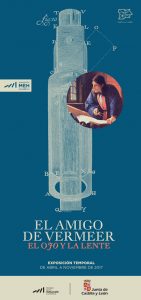
Delft, the Home of Microbiology
An exhibition at Van Leeuwenhoek’s resting place.
2017 is the 175th anniversary of the founding of the Polytechnic School that eventually became Delft University of Technology. The University is celebrating with a 175 day Lustrum, much of which will focus on the Life Sciences. It is also 100 years since Van Iterson founded the Delft Botanic Garden on the land behind his laboratory.
We are beginning the celebrations with a look at the history of microbiology and the biosciences in Delft, from the 17th to the 21st centuries. The exhibition will run until 26 February, 2017.
This will take the form of an exhibition in the area around Antoni van Leeuwenhoek’s grave in the Oude Kirk.
- Delft's Old Church
- AJ Kluyver at the grave of Antoni van Leeuwenhoek
The text on the poster boards is in Dutch, but there are also English language handouts. It includes 20th century teaching microscopes, a cross section of an electron microscope and 3-D scanned replicates of a Van Leeuwenhoek microscope and the Delft telescope.
The exhibition offers a taster of the achievements of Delft microbiologists and introduces some of the people who helped and supported them. For example, we might never have heard of Antoni van Leeuwenhoek and his little animals without Reinier de Graaf, the doctor who introduced van Leeuwenhoek to the Royal Society of London, publishers of much of his work. Jacques van Marken not only brought Beijerinck to Delft to establish his industrial microbiology laboratory, he was also one of the people instrumental in creating the Department of Microbiology and Professor’s Chair for Beijerinck at what was then the Delft Polytechnic.
- Reinier de Graaf
Medicinae Doctor
- Jan and Agneta van Marken
Many others have provided help, support and encouragement, but the silent contributor to the history of microbiology is the City of Delft itself. Many very well-studied microorganisms were found for the first time in samples from Delft’s canals, soil and from industrial sources, even now.
- Th old city gate
- Wastewater bioreactors
Over 300 years ago, before Van Leeuwenhoek found his little animals, the city was already a hotspot in scientific research-for example Stevin and de Groot dropped different lead balls off the tower of the New Church and proved that they hit the ground at the same time 3 years before Galileo did the same experiment from the tower of Pisa!
Playing with facsimile Van Leeuwenhoek microscopes
Since most of my available time is currently vanishing into preparing the Delft School Archive and Museum for its move to Delft’s Science Centre, I thought that a simple blog showing some of the photos I’ve taken with my facsimile Van Leeuwenhoek microscopes might be nice this month.
By the way, I’ve been asked why I keep the photographs on this blog fairly small. The reason is simple – I’ve had some problems with plagiarism and this is an attempt to limit what people can do or claim with my work without the high resolution versions.
I have 5 Van Leeuwenhoek facsimiles with magnifications ranging from 68x-303x, and have been trying to repeat some of his experiments as closely as possible (it’s a good way to spend a wet weekend!). The first 2 pictures show the structure of the microscopes and my photographic setup. Ideally, one needs a camera that can cope with single point metering, and a macro lens also helps with short focusing distances. The microscope is clamped in front of the camera lens, side-on. The piece of cardboard (with a 1 cm hole in it) is there to protect the camera’s light meter because that lamp was much bigger than the microscope. I’ve recently been finding it easier, especially with the stronger lenses, to use a small LED torch.
Fossil microorganisms can be very useful for comparing methods as they don’t dry out, swim away or otherwise change. Here you can see a vorticella-type protozoan (L) and diatom preparations under bright (C) and semi-dark field (R) lighting
Van Leeuwenhoek’s first observation of microorganisms came from his examination of a water sample from a shallow lake called the Berkelsemeer. This lake no longer exists, but a sample from a similar lake near Delft (the Delftsehout) provided this picture (one of the first I took) of blue-green algae and a rotifer on the right. The black circle is an air bubble.
Van Leeuwenhoek did a lot of work on the formation of crystals of different sorts, and the next 2 photographs show the same table salt crystal under bright (L) and semi-dark (R) field lighting. My results agreed with Van Leeuwenhoek’s observation that you get smaller crystals if you let them form slowly by letting the saturated solution evaporate at room temperature rather than by heating it.
The next picture shows red blood cells that I’d dried onto a coverslip. I only noticed after I’d taken the photograph that the little torch had slipped a bit, but I rather like the odd lighting effect.
Thus far, my attempts to make thin enough slices of plant materials to examine properly have not been very successful. These photos show my best efforts for carrot root (L) and leek leaf (R). I’m reluctant to cheat by using a microtome, so will have to keep practising!
As Van Leeuwenhoek also complained, the shallow depth of field (or focus) of the stronger microscopes can be a real problem. I haven’t been very successful with taking photos of living microorganisms using the 303x lens. They tend to swim out of focus before I have time to trigger the shutter, so the least frustrating thing is to make short films and then use single frames from the film. This image shows bacteria and a hunting ciliate protozoan from a pepper water sample.
Finally, a lobster larva from a seawater sample. It was either long dead, or a shed skin as the whole thing was covered by a thin layer of algae. I had to take 2 photographs and then join them afterwards– I obviously need to get a weaker microscope!
Delft’s Biological Labs 2: The originals..
Sadly, there are no pictures of the first “microbiological laboratory” and the building was demolished at the start of the 1890s, but by collecting the occasional descriptive comments from Antoni van Leeuwenhoek’s letters, we can gain a glimpse of the room where so many types of microorganism were seen for the first time. The following is an extract from our book “Antoni van Leeuwenhoek: Master of the Miniscule” which is scheduled for publication by Brill, Leiden (Brill.nl) in April, 2016.
Van Leeuwenhoek’s home and workshop
Antoni van Leeuwenhoek worked in his comptoir. The word literally means a counting or writing room, but it was actually his workshop. It was located in an annex to his house so that he would not be disturbed. The room was partitioned off with wainscoting, with a hole to accommodate the spring pole of his lathe. The bottom two of the four windows overlooking the street could be opened upwards, and were fitted with wooden shutters. His workshop could be closed off “so that little or no air enters from outside”, but if he was working with a candle, he preferred to open them a little, and cover the window with curtains.
His letters and the inventory of the house compiled after the death of his daughter Maria reveal some of the equipment and materials that he used. As well as his lens and microscope making equipment, there was a small furnace to extract gold and silver from ore, a barometer, a salt water aquarium, sharp blades, chemicals (including the distillate “brandewijn” for conservation and saffron for colouring), and a collection of specimens ranging from minerals to the testicles of a rat preserved in spirits. He had a balance with weights, a glass-blowing table with a lamp, and an anvil for the production of his microscopes, and all of his surveying equipment.
Many of the objects that Van Leeuwenhoek studied came from the immediate surroundings of his home. He had two gardens, one adjoining the house with a well and another outside the city. He kept a green parrot for a long time and examined the excrement of the sparrows in his yard after feeding them. Delft’s fish market was just across the canal from his house. Since he regularly attended the dissection demonstrations at the neighbouring Anatomy Theatre, it seems likely that he brought samples home. Additionally, in a few of his letters he mentioned that sailors returning from voyages brought him exotic samples.
The star shows the position of Van Leeuwenhoek’s house in relation to the Town Hall, where he worked, the marketplace and the Old Church where he is buried.
The Microbiology Laboratory
Beijerinck originally came to Delft in 1885 to set up and run a microbiological laboratory in J.C. van Marken’s Yeast Factory. Van Marken and his wife were enlightened employers, providing their workers and their families with on-site houses, education, medical and social facilities. Van Marken made it a point of honour to keep all of his staff informed about the factory by means of an internal paper called “De Fabrieksbode”. In 1885 he wrote an article about the need for proper bacteriological studies, edited extracts of which follow:
“I would like to explain the need for the appointment of Dr. Mr. W. Beijerink as Chief of the Bacteriological Laboratory of the Yeast Factory…..
I have previously discussed the idea that “life is a struggle”, in this case between yeast and against harmful bacteria. The day on which the last harmful bacteria has been expelled from our
factory will be a cause for celebration and a public holiday….
We would have a quality supply of yeast, which would overcome the sharpest competition; our yeast would be able to circle the world in 80 days, without spoiling.
So fight the harmful bacteria!“
Van Marken’s attitude to results seems remarkably relaxed, contrasting with the attitudes of modern industry. He went on to say:
”Whatever the case, the arrival of the scholar, Dr Beyerinck must be appreciated in more ways than one. We must not have exaggerated expectations of his activities in and for our factory, but have faith that in maybe one, five or even ten years, some day a ray of light will be cast into the darkness of the fermentation business and bring incalculable advantages to our company.”
It cannot be claimed that Beijerinck was happy as an industrial scientist. He felt responsible if errors incurred financial losses, and his interests were much wider than required by his job. As can be seen from the table below and his laboratory journals, he seems to have normally had several unrelated lines of research running at any one time. Only the rows marked * involved work needed by the Factory.
TOPICS OF PUBLICATIONS THAT APPEARED DURING BEIJERINCK’S INDUSTRIAL YEARS
Sunsets (Were the spectacular sunsets of the time due to dust from Krakatoa?)
Root nodules and their bacteria
Plant galls
Grasses, carrots, gardenias, barley
Algae, protozoa in drinking water, hydrogen peroxide in living organisms
*Fermentation, butanol fermentation, Saccharomyces associated with beer, Schizosaccharomyces octosporus
Lactase, maltase, blue cheese bacteria, kefir
Photobacteria, sulfate reduction
*Methods: auxanograms, gelatine plates, Chamberland filters, sampling stratified cultures, microbiochemical analysis.
When his sisters, Henriette and Johanna, visited him in his laboratory, Henriette reported that he “sat there, surrounded by a mass of retorts, bottles and glasses, boxes, corks and heating apparatus, so that it looked like the workshop of an alchemist”.
Eventually, Van Marken and a few others managed to persuade the Delft Polytechnic (now Delft University of Technology) that they really needed a Department of Microbiology with Beijerinck as its Professor. Until his new lab was ready, he continued to use the laboratory at the Yeast Factory. Their support continued for the rest of his life – when Beijerinck retired, the Yeast Factory paid for the construction of a laboratory in the garden of his retirement house in Gorssel.
Applied Botany
After his appointment as a Professor, Van Iterson initially worked in Beijerinck’s lab , but in 1908 he was given space in a house at Oude Delft 81, a building used for temporary accommodation by the Polytechnic. As can be seen from the photographs, the rooms were small and not really suitable for use as teaching laboratories. The office, and the library were tiny, and the greenhouse was far too small for a Department called “Applied Botany”. It wasn’t until 1911, when he was offered a job in Java, that the Polytechnic agreed to start work on a purpose-built laboratory and Botanic garden. Both finally opened in 1917. At the time of writing, the laboratory is now part of Delft University’s Department of Biotechnology, but the Department will move to a new building later this year. The Garden’s website is HERE.
- Office
- Library
- Greenhouse
- Laboratory
- Research laboratory
- Teaching lab
Finding more van Leeuwenhoek microscopes…
In April, I published a survey of the currently accepted authentic Van Leeuwenhoek microscopes in FEMS Microbiology Letters, and suggested that more might be found. Within a month, there came news of two previously unknown microscopes. Their history over the intervening centuries could not have been more different.
Press releases in the Dutch newspapers and on TV (21st May, 2015) announced that a silver Van Leeuwenhoek microscope had been discovered in a box of old Dutch doll’s house equipment. The new owner took it to the Museum Boerhaave in Leiden for authentication. They compared it with the 4 Van Leeuwenhoek microscopes already in their collection and the microscope belonging to the University of Utrecht before presenting their results at the beginning of June. They concluded that this microscope indeed dates from Van Leeuwenhoek’s lifetime and must be considered to be authentic. It can be seen at Museum Boerhaave until mid-July (2015). Thereafter it will go home to its owner for display at Planetarium Zuylenburgh in Oud-Zuilen.
Within days of the announcements about the silver microscope, a letter by Brian Ford appeared in the journal “Nature” (28 May, 2015), announcing the finding of a brass Van Leeuwenhoek microscope in sediment that had been dredged from Delft canals during maintenance work. This microscope’s new owner had sent it for authentication to Dr Ford in the UK, and he had concluded that it was indeed real.
Before these two discoveries, the most recent find was in 1983, when a visitor to the “Beads of Glass” exhibition at Museum Boerhaave donated a small silver microscope that she had owned without realizing what it was.
It is likely that many of Van Leeuwenhoek’s gold and silver microscopes have been melted down, but my crystal ball tells me that there must be more out there to find, especially since he also made a number from brass. For example, two microscopes were individually photographed at the start of the 20th century in Munich and Paris, but their locations are now unknown. From the photograph in the 1929 Nachet Collection Catalogue, it can be seen that the Paris microscope had been incorrectly assembled and could not have been used until it had been put together properly, a mistake that someone making a copy would be unlikely to make. The Munich microscope had been accepted as authentic by the University of Utrecht in the late 19th century, before it was sent to Munich.
Like the newly discovered microscopes, there are structural similarities, but neither appears to be physically identical to the accepted microscopes. This rules out most of the known late 19th and 20th century copies (which tend to be replicas of either the Utrecht University microscope or one from the Museum Boerhaave collection). Hopefully they (and others) will reappear, and can undergo modern authentication analysis.
Delft’s first microbiologist – Antonie van Leeuwenhoek
Although the Delft School of Microbiology only dates back to Martinus Beijerinck and the late 19th century, it seems churlish to ignore Antonie van Leeuwenhoek on a blog discussing Delft microbiology just because he was 200 years too early. He was not a teacher and indeed actively resisted explaining his methods, but he did publish copiously about everything he saw with his magnifying glasses and simple microscopes, making him the first microbiologist (although not the first microscopist).
Today, van Leeuwenhoek is generally mentioned in connection with the discovery of microorganisms. However, his studies were much broader than that. He dissected insects, and examined anything that would fit on his microscope. His first letter to the Royal Society illustrates this clearly as it covers the sting, head and eye of the bee, and the structure of a louse as well as his observations of fungus that he said grew on leather, meat and other things.
Van Leeuwenhoek’s microbiological discoveries began in 1674 when he examined samples from the cloudy water of the Berkelsemeer, a lake near Delft that no longer exists, and found his famous “little animals”. His discovery of bacteria probably dates from his pepper water experiments in 1676, when he reported seeing extremely small animals among the others – a copy of the drawing that accompanied this letter was published by Henry Baker, and is shown here. “Fig IV” is probably the first appearance in print of a bacterium.
- Bright field microscopy of living protozoa
- Dark field microscopy of algae
- Facsimiles of van Leeuwenhoek microscopes
The film clip here – www.youtube.com/watch?v=OniSF8QrHac – shows what can be seen with facsimiles of van Leeuwenhoek microscopes.
And there’s an excellent website about our Founding Father here: http://lensonleeuwenhoek.net/



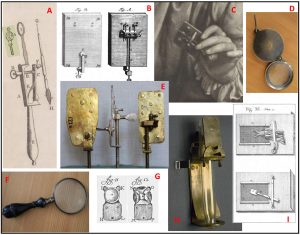
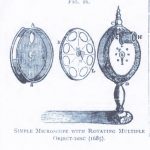


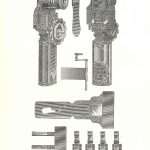
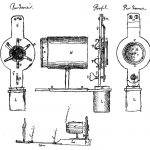
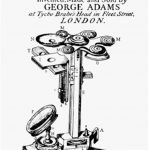
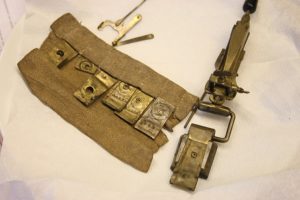
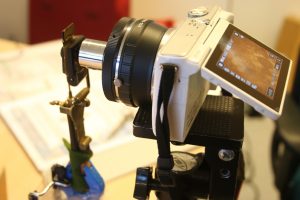

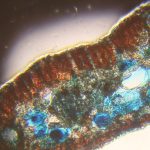
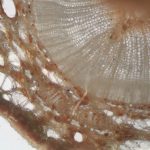
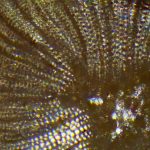

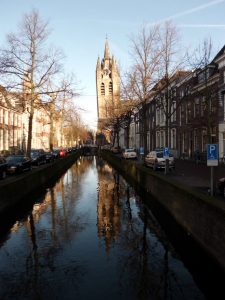

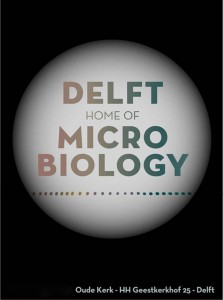
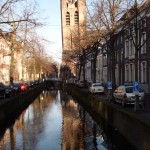
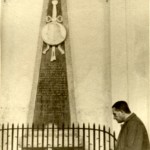
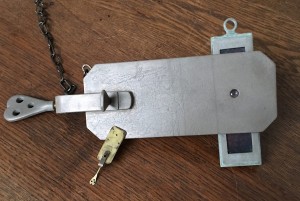
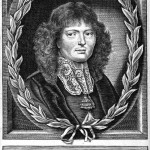
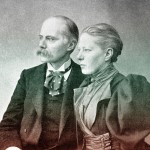

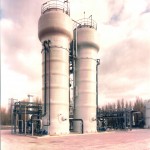
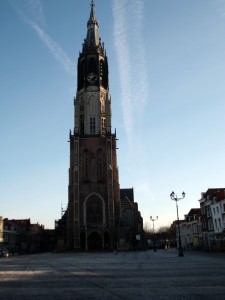
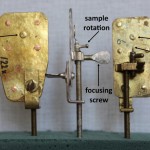
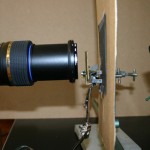
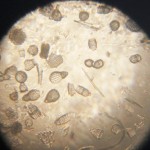
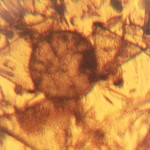
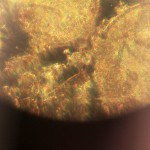
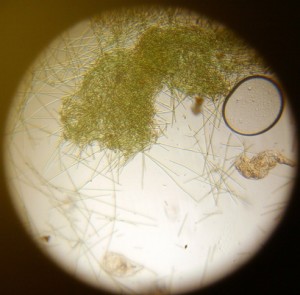
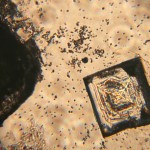
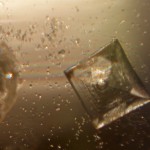
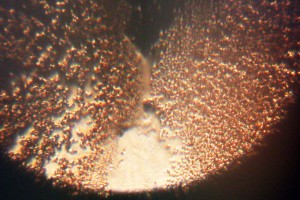
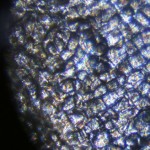
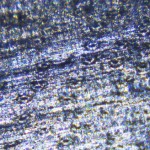
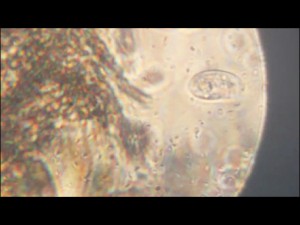
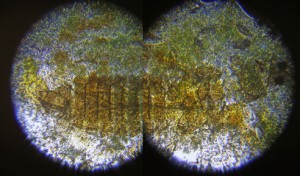
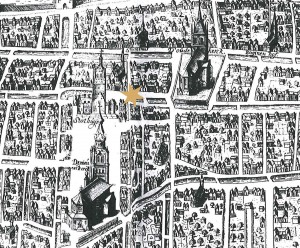
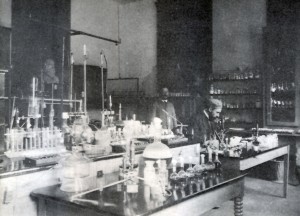
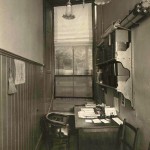
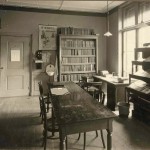

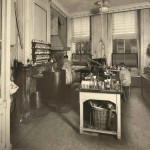
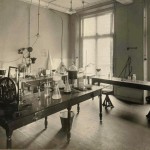
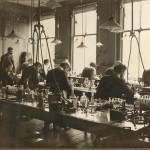
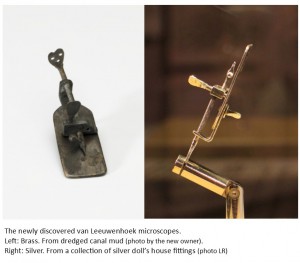
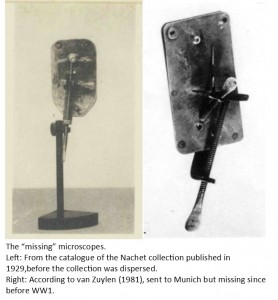
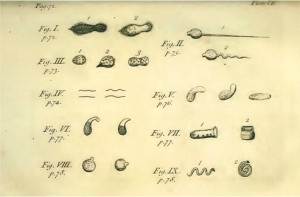

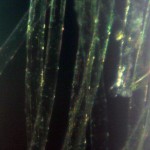
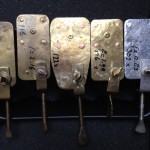
Recent Comments